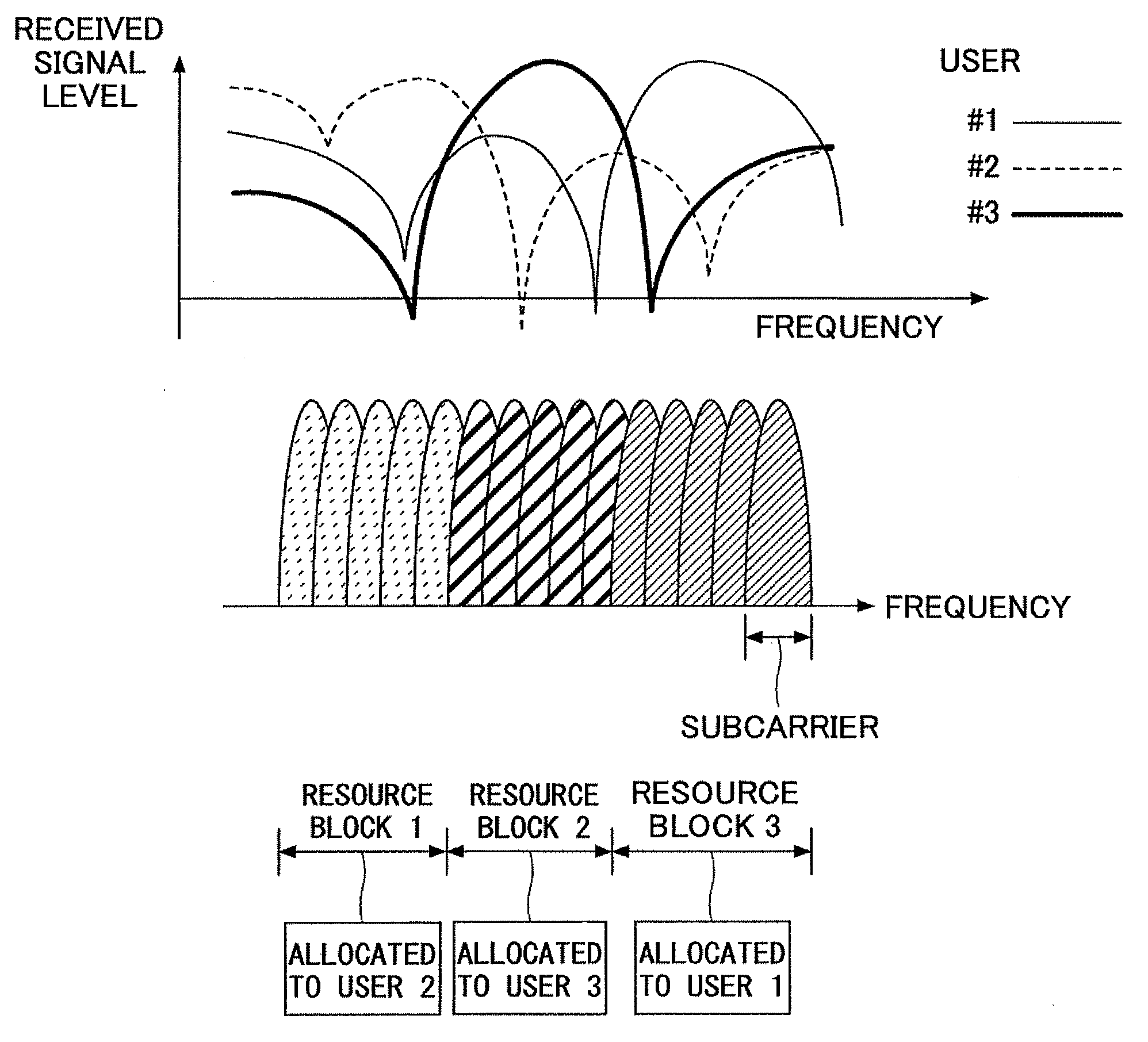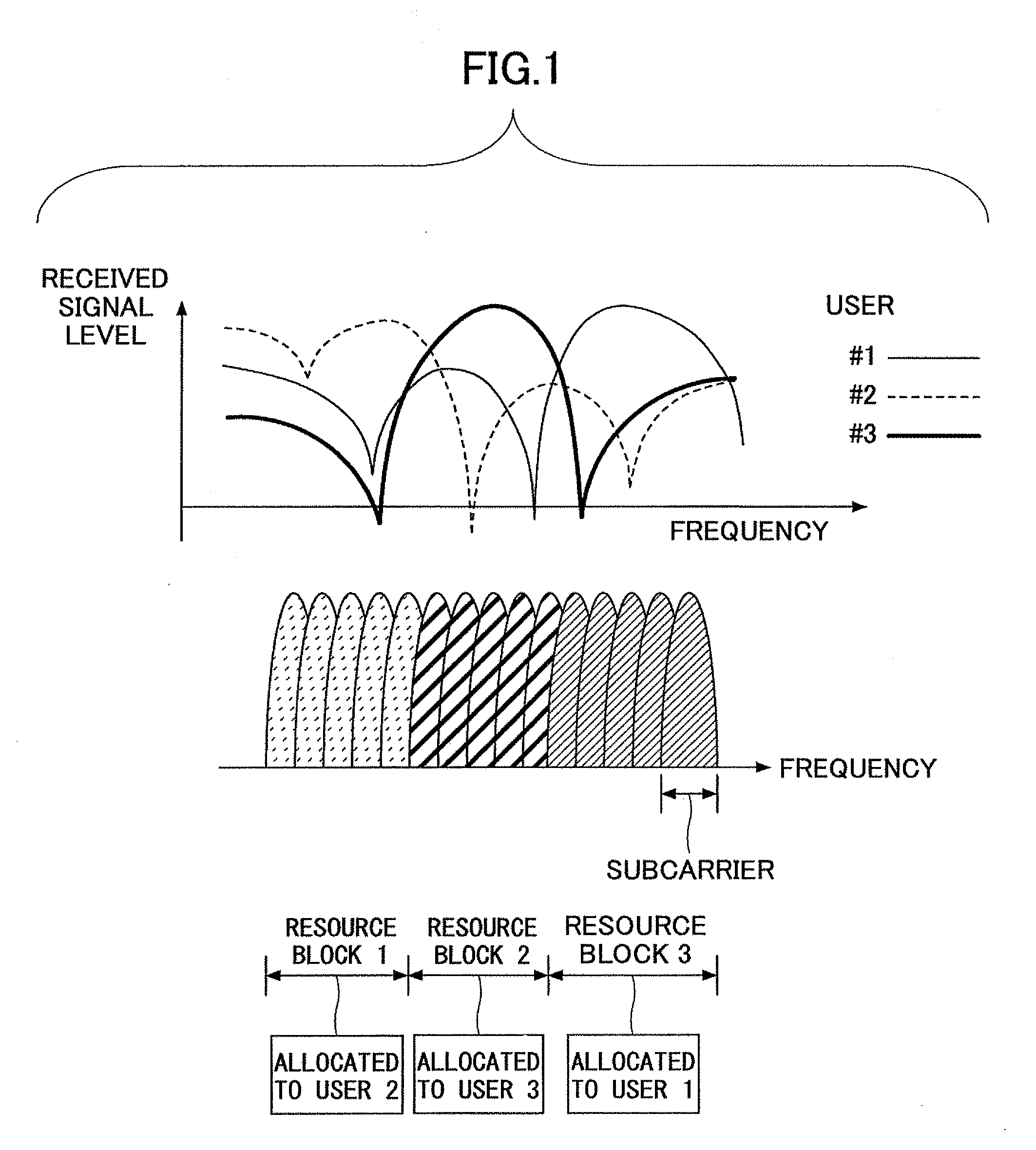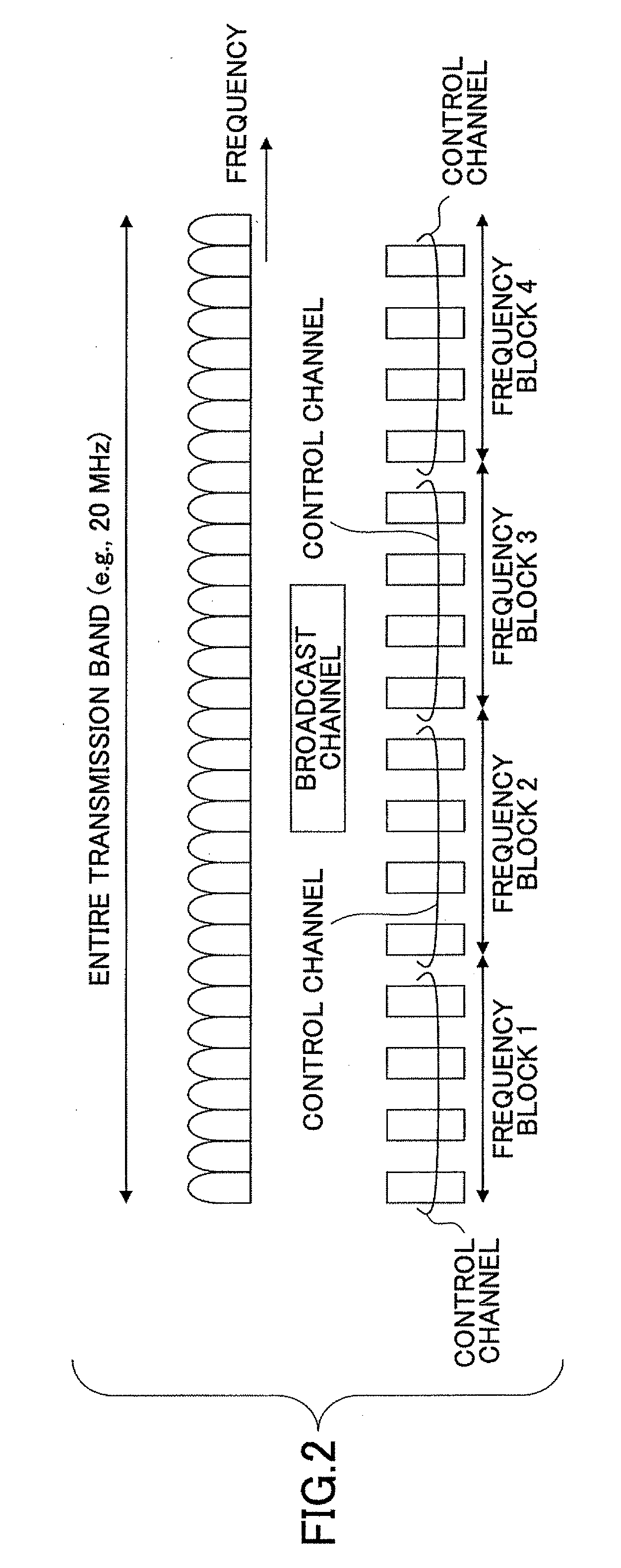Base station, communication terminal, transmission method, and reception method
a communication terminal and base station technology, applied in the field of wireless communication technologies, can solve the problems of increasing the workload of signal processing at the sending and receiving end, reducing resource utilization efficiency, and difficulty in further improving reception quality, so as to achieve efficient transmission of control channels
- Summary
- Abstract
- Description
- Claims
- Application Information
AI Technical Summary
Benefits of technology
Problems solved by technology
Method used
Image
Examples
first embodiment
[0087]FIG. 2 is a drawing illustrating a frequency band used in an embodiment of the present invention. Values used in the descriptions below are just examples and different values may be used. In this example, a frequency band (entire transmission band) allocated to a communication system has a bandwidth of 20 MHz. The entire transmission band includes four frequency blocks 1 through 4. Each of the frequency blocks includes multiple resource blocks each including one or more subcarriers. FIG. 2 schematically shows frequency blocks each including multiple subcarriers. In this embodiment, it is assumed that four different communication bandwidths of 5 MHz, 10 MHz, 15 MHz, and 20 MHz are defined. A user device (e.g., a communication terminal, a mobile terminal, or a fixed terminal) performs communications using one or more frequency blocks in one of the four bandwidths. A communication terminal in the communication system may support all of the four bandwidths or support only part of ...
second embodiment
[0209]Since the general control channel (including part 0) is information necessary for all users and is used to decode data channels, error detection (CRC) coding and channel coding are performed on the general control channel. In a second embodiment of the present invention, exemplary methods of error detection coding and channel coding are described. In the configuration of FIG. 4B, it is assumed that L1 / L2 control information (part 0) and L1 / L2 control information (parts 2a and 2b) are channel-coded separately (i.e., channel-coding / spreading / data-modulation units 41 and 42-A are provided, respectively, for part 0, part 2a, and part 2b). Variations of this configuration are described below.
[0210]FIG. 10A illustrates a method where part 0 and parts 2a and 2b are error-detection-coded together but are channel-coded separately. In this case, each of communication terminals UE1 and UE2 performs error detection collectively on part 0 and parts 2a and 2b, and extracts an L1 / L2 control ...
third embodiment
[0215]To improve the received signal quality of control channels, it is preferable to perform link adaptation. In a third embodiment of the present invention, transmission power control (TPC) and adaptive modulation and coding (AMC) are used to perform link adaptation. FIG. 11 is a drawing illustrating an example of transmission power control where transmission power of downlink channels is controlled to achieve desired reception quality. Referring to FIG. 11, a high transmission power level is used to transmit a downlink channel to user 1 because user 1 is away from the base station and its channel conditions are expected to be poor. Meanwhile, channel conditions of user 2 close to the base station are expected to be good. In this case, using a high transmission power level to transmit a downlink channel to user 2 may increase the received signal quality at user 2 but may also increase interference with other users. Because the channel conditions of user 2 are good, it is possible ...
PUM
 Login to View More
Login to View More Abstract
Description
Claims
Application Information
 Login to View More
Login to View More - R&D
- Intellectual Property
- Life Sciences
- Materials
- Tech Scout
- Unparalleled Data Quality
- Higher Quality Content
- 60% Fewer Hallucinations
Browse by: Latest US Patents, China's latest patents, Technical Efficacy Thesaurus, Application Domain, Technology Topic, Popular Technical Reports.
© 2025 PatSnap. All rights reserved.Legal|Privacy policy|Modern Slavery Act Transparency Statement|Sitemap|About US| Contact US: help@patsnap.com



